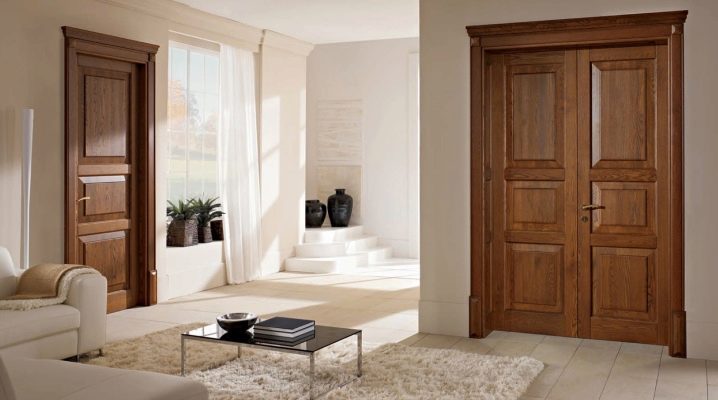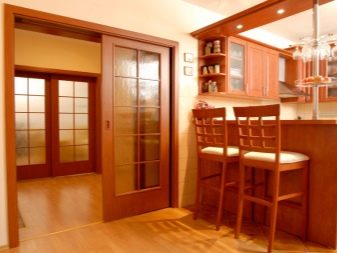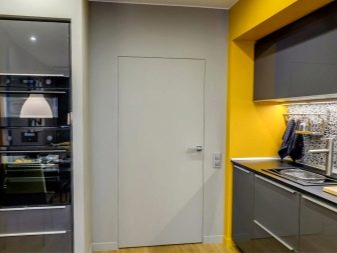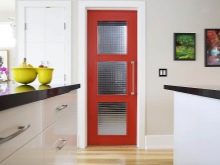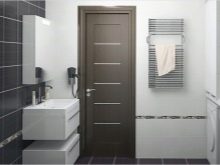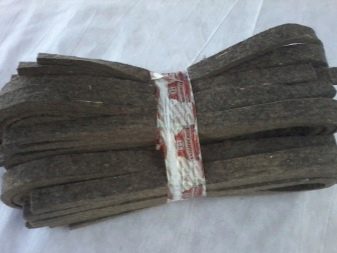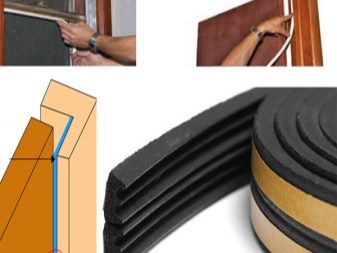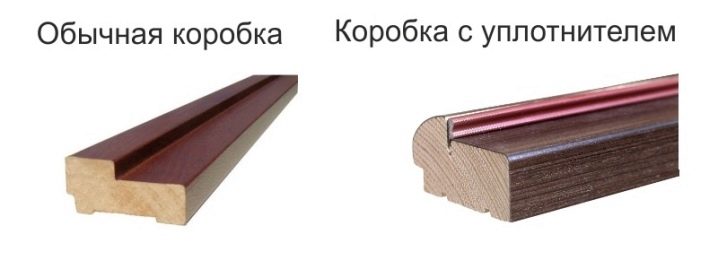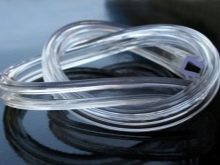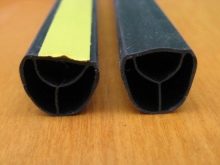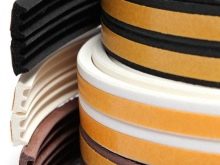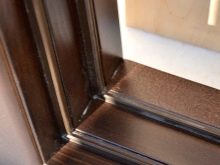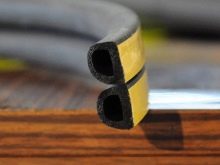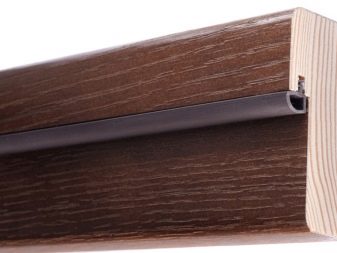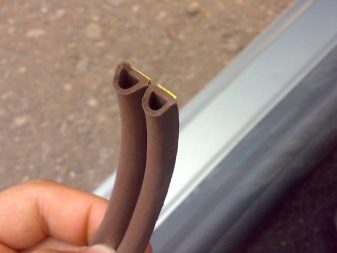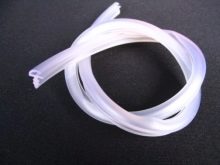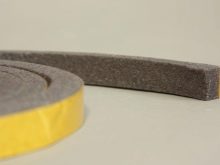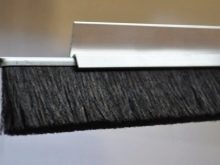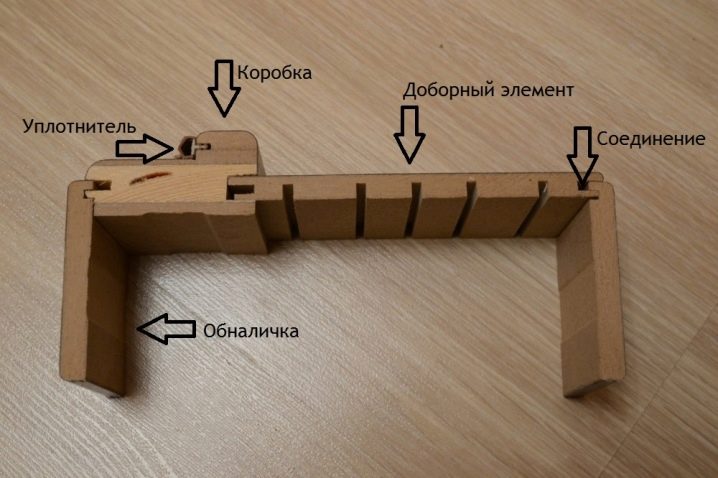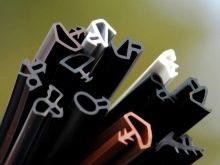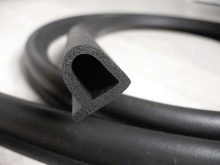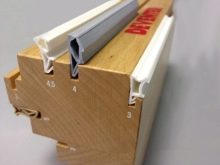Interior doors seals: types and features
Special constructions help to protect the room from moisture, dust and extraneous sounds. The seal for interior doors provides silent operation, as the main fabric does not hit the box.
Special features
Typically, seals are not installed on all doors in a residential area.
The following rooms are most often in need of additional noise, moisture and dust protection:
- children’s
- kitchen;
- bathroom;
- restroom.
Special door designs reliably retain odors and suppress noise, which can interfere with rest or sleep.
High-quality insulation for door panels should have the following characteristics:
- high tightness;
- do not interfere with the smooth running of the door leaf;
- good resistance to temperature extremes and humidity parameters;
- be environmentally friendly;
- do not pose a threat to the health of people and animals;
- have a high rate of elasticity, quickly regain form.
All modern insulation materials meet the stated requirements, reliably performing their functions.
For interior doors, the door sealant is softer and more resilient than for entrance structures. Otherwise, the door will be difficult to close, which ultimately will reduce its life.
Some interior doors already have insulating elements, but sometimes it may be necessary to install a seal on their own.
Kinds
To find the best insulation for an interior door, you need to know their types, which can be used inside premises.
The following types of seals are popular:
- Self adhesive This type is easy to install, even a person with no experience in installing door insulation can handle it. It is a tape that has an adhesive backing, by removing which you can easily attach the sealer to the canvas or the door box.
- Magnetic. Can only be used on metal doors. They are reliable, easy to assemble and dismantle, installation does not require possession of special skills and tools. Most often they are installed in the bathrooms and toilet, as they have the highest indicator of tightness.
Also important is the purpose of door insulation.
According to this parameter, seals are divided into the following types:
- Contour. Installed around the perimeter of the door box. Allows you to achieve high levels of sound insulation. In addition, the door leaf with a contour seal does not knock when opening and closing the box.
- Threshold. Installation is carried out in a special recess. The groove is located at the bottom of the door frame. One end of this type of insulation ends with a blind end, and the opposite end with a special device that activates the slot seal when the door is opened.
- Fireproof Used for temporary (depending on the model and manufacturer) insulation of the room in which the fire occurred. It is most often made of foam materials, which expand with increasing temperature, reliably sealing the room in which the fire occurred.This type of insulation reliably protects other rooms from smoke, fire and toxic products of combustion.
The choice of the necessary type of interior seal depends, first of all, on the required characteristics of protection and the material from which the door leaf is made.
Some types of insulation do not apply to wood products, others - to plastic, metal, or glass.
Materials
Seals for interior doors can be made from various raw materials.
The most commonly found in the sale of insulation of the following materials: rubber (polyurethane), silicone, foam rubber, brush tape.
- Rubber models - the most popular, they appeared on the market among the first. They are made from oil and acid-resistant raw materials. These seals are affordable, have a long service life, are resistant to cracking.
High moisture and airtightness allows the use of insulating material made of rubber in any premises, in interior and exterior structures.
- Silicone seal often used as insulation for interior doors of glass.Thanks to special additives that increase the durability of the initial raw materials, this type of door linings lasts a long time, but does not have high protection against aggressive detergents and acids.
- Foam seal - the most budget of the existing. Its main disadvantage is a very small lifetime. Due to the porous texture, it starts to crumble under the influence of the environment and soon becomes unusable. With intensive use, it quickly loses its elasticity, it is laminated, as a result of which its protective properties are sharply reduced.
- Brush sealer used for compartment doors and allows you to protect the space of the room from dust, moisture and noise due to the fleecy surface. It is very easy to install, as it has an adhesive base.
Thus, in order to choose the correct seal that will last a long time, you should give preference to models made of rubber or silicone.
Installation Tips
Installation of the seal on the interior doors can be carried out in several ways, which depend on the type of insulation. The most popular way is to install self-adhesive models.
The sequence of actions is as follows:
- The surface is being prepared. To do this, use a degreaser and a soft cloth. It is very important to completely remove dust and small debris, otherwise the quality of bonding will be extremely low.
- The protective film is carefully removed from the seal and the product is attached to the desired place. It is better to stick the self-adhesive sealer in small pieces, gradually removing the paper protection as needed.
In order for sound and moisture insulation to be higher, it is necessary to glue both sides, as well as the lower and upper part of the door box.
To install insulation of an interior door using the “into the groove” technology, special skills are also not required, and from tools only a sharp construction or kitchen knife. Particular attention is paid to accurate trimming of the seal in the corners. After installation, excess insulating material is cut off with a knife.
Some models of seals have no special fasteners and are fixed on the door leaf with silicone glue.
It is very important when installing silicone or rubber insulating material not to stretch it, as this will reduce the product specifications and level of protection.
In apartments and private houses it is often necessary to seal the connection of the box and the door leaf in order to protect the room from noise, moisture and odors. This task is easily handled by modern insulating materials that are easy to assemble, do an excellent job with the tasks and are distinguished by a long service life. A wide range allows you to choose the best version of the seal for any door and in any room.
You will learn more about how to choose a seal for interior doors in the following video.
